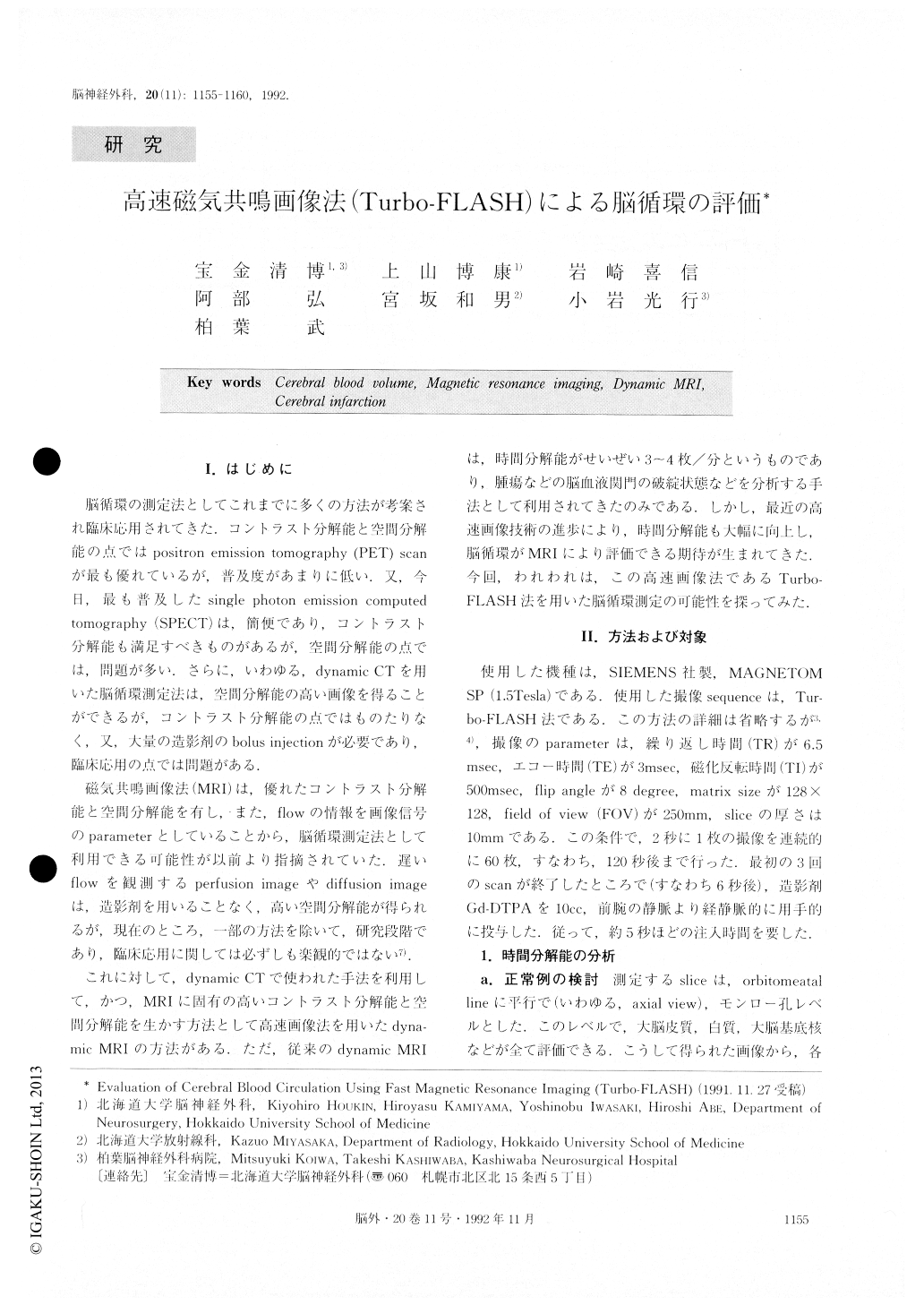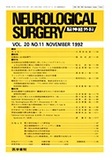Japanese
English
- 有料閲覧
- Abstract 文献概要
- 1ページ目 Look Inside
I.はじめに
脳循環の測定法としてこれまでに多くの方法が考案され臨床応用されてきた.コントラスト分解能と空間分解能の点ではpositron emission tomography(PET)scanが最も優れているが,普及度があまりに低い.又,今日,最も普及したsingle photon emission computed tomography(SPECT)は,簡便であり,コントラスト分解能も満足すべきものがあるが,空間分解能の点では,問題が多い.さらに,いわゆる,dynamic CTを用いた脳循環測定法は,空間分解能の高い画像を得ることができるが,コントラスト分解能の点ではものたりなく,又,大量の造影剤のbolus injectionが必要であり,臨床応用の点では問題がある.
磁気共鳴画像法(MRI)は,優れたコントラスト分解能と空間分解能を有し,また,flowの情報を画像信号のparameterとしていることから,脳循環測定法として利用できる可能性が以前より指摘されていた.遅いflowを観測するperfusion imageやdiffusion imageは,造影剤を用いることなく,高い空間分解能が得られるが,現在のところ,一部の方法を除いて,研究段階であり,臨床応用に関しては必ずしも楽観的ではない7).
In its initial stage of development, poor time resolu-tion was supposed to be inevitable for magnetic reso-nance imaging (MRI). The development of the gradient echo technique, however, has made an opening for a breakthrough to a fast MRI technique. However, con-ventional gradient echo technique is not fast enough to disclose the cerebral blood circulation.
A new technique (turbo-FLASH), which combines gradient echo and preparation pulse, has opened the door to a true dynamic (high time resolution) MRI.The authors performed a basic study of this new fast imag-ing technique (Turbo-FLASH) for the evaluation of cerebral blood circulation.
Using this dynamic MRI, the conventional Gcl-DTPA administration (0.1mol/kg, intravenous manual admi-nistration) has produced sufficient contrast to reveal a difference of the extent of enhancement between nor-mal gray matter and white matter. In patients of cere-bral infarction, the infarcted brain does not show any significant increase of signal intensity after the adminis-tration of contrast medium, whereas the normal brain shows a sharp increase of signal intensiy after the administration of contrast medium.
Indeed, many puzzling questions remain to be solved for clinical application of this new dynamic MRI. For example, the optimal quantity of contrast medium and optimal parameters for this sequence (Ti weighted or T2 weighted?) are still unknown. But, in any case, this dynamic MRI is expected to be a clinically powerful tool for the evaluation of cerebral blood flow.

Copyright © 1992, Igaku-Shoin Ltd. All rights reserved.


